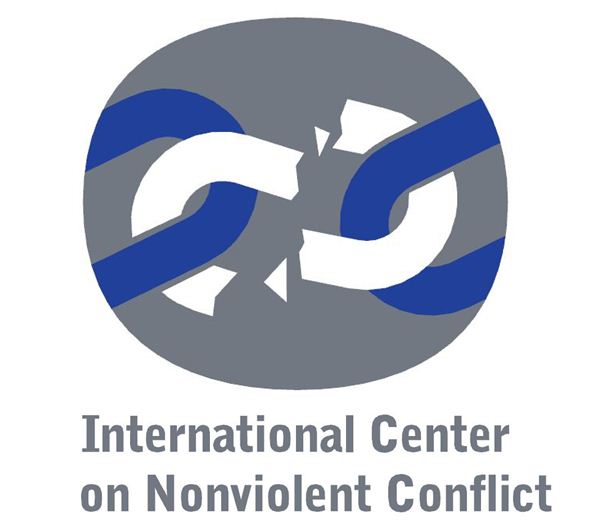No name
Collection of 17 essays by academics, journalists, lawyers, policy makers and activists covering Euromaidan and the election of President Poroshenko in May 2014, and also developments in Crimea, from a multidisciplinary perspective. It is sponsored by the Polish National Research Institute, but inlcudes also contributions from Germany, Sweden and the USA. Thre are chapters on post-1991 Ukrainian politics, on the Orange Revolutions and Euromaidan (focusing only on Kiev).
Explores how women's reproductive rights and needs are reflected in pro-life and pro-choice public debate in Poland.
The thesis starts from the political context of the late 1970s when, despite detente, the US was developing its nuclear weapons arsenal, and apartheid South Africa emerged as a nuclear weapons state. Black campaigners against nuclear weapons emerged in both countries, and both suffered from racial discrimination, but the very different political contexts made organized opposition to nuclear policies very much harder in South Africa. However, in both cases nuclear weapon developments were closely linked to an international context, and both movements also relied heavily on international allies.
Brock assesses the changing context of her work for War Resisters' International since she began in 2012, when conscription had ended or been suspended in 22 states. She notes how regional fears of Russian aggression have influenced the reintroduction of conscription in former Soviet states (Ukraine, Georgia and Lithuania) and in Western Europe, where Sweden had reintroduced it. She also comments on Gulf States introducing or reintroducing conscription (as in Kuwait). The extension of conscription to women in both Norway and Sweden, opposed by some feminists but supported by women politicians, raises wider questions, which Brock considers, about the extent of social diversity in the armed forces. The article is extensively annotated, including references to protests against conscription and against the major military exercise 'Aurora' mounted by neutral Sweden in 2017, which incorporated NATO troops.
Recounts the life and work of black woman activist who played key role in three major organisations: the NAACP, SCLC and SNCC.
This is a collection of articles authored in The Guardian by journalist Laura Bates, in which she uncovers the sexism underpinning personal relationships, the workplace, the media and society in general.
The film Udita (made by the Rainbow Collective) traces the struggle by women garment workers in Bangladesh to get better conditions and pay in the context of appalling and dangerous conditions. The film stresses the growing resistance by the women and interviews a woman organiser who describes the tactics used to make their boss pay them unpaid wages. It is still extremely relevant as the movement of Bangladeshi garment workers continues. The Guardian Weekly (18 January 2019, p. 7.) reported briefly on a strike by thousands of garment workers for better pay which had shut down 52 factories and was in its second week. The previous Sunday women had blockaded a road just outside Dhaka. The film is made available on YouTube at this link https://www.youtube.com/watch?v=g_tuvBHr6WU
This analysis, written at an early stage of the 2019 protests, comments on the combination of longstanding grievances and the recent sources of anger, such as repression of protests calling for jobs for university graduates in September, which led to the mass eruption onto the streets of 'unemployed and underemployed youth' in Shia majority areas. It notes that there was little immediate response in Sunni-majority areas, because of the recent violence of the war against ISIS and fear of being targeted as pro-ISIS, or as supportive of Saddam Hussein's Baath Party. The author also examines why Shia protesters reject the existing political parties and often criticize Iran's role in Iraqi politics.
Compares ‘unsuccessful’ and ‘successful’ movements against Socialist regimes (Tiananmen and East Germany 1989), against military regimes (Panama and Chile in the 1980s) and against personal dictators (Kenyan opposition to Moi and the Philippines struggle against Marcos). Draws some fairly brief general conclusions.
Kostovica’s commentaries also appeared frequently in the on-line journal Transitions: http://www.tol.org.
Argues that the First Intifada represented a mass nonviolent mobilization in which women played a significant role, and looks at the global history of nonviolent resistance to suggest that nonviolent strategies are the way to achieve a just peace. See also Mary Elizabeth King, Palestine: Nonviolent Resistance in the Struggle for Statehood, 1920s-2012, In Maciej J. Bartkowski, Recovering Nonviolent History: Civil Resistance in Liberation Struggles (A. 1.b. Strategic Theory, Dynamics, Methods and Movements) Boulder CO, Lynne Rienner, 2013 , pp. 161-180 .
See also John L. Hammond, The MST and the media: Competing images of the Brazilian Landless Farmworkers’ Movement, 2004 , pp. 61-90
(also published as: Unbowed: My Autobiography, Anchor 2008)
By prominent Kenyan woman who promoted mass planting of trees by women at grassroots level through the Green Belt Movement (founded in 1977) to reverse effects of deforestation. She also undertook vigils and fasts for human rights under the dictatorship of President Moi. See also her book: 1985 Wangaari Maathai, The Green Belt Movement: Sharing the Approach and the Experiences, 1985 New York, Lantern Books, 2004 , pp. 117
Account of four transnational teams going to Warsaw Pact capitals to protest against the 1968 Warsaw Pact invasion.
Historian and activist, Barbara Ransby, explores the birth of the hashtag and social media platform #BlackLivesMatter by three Black activist women following the shooting of unarmed 17 year-old Trayvon Martin in Sanford, Florida, in 2012, and the acquittal of his killer, George Zimmerman. Through a series of interviews with its principal organisers, Ransby’s narration contextualizes the origin of the Black Lives Matter movement in prison reform and anti-police violence reform policies, the establishment of Black youth movements, and radical mobilizations across the country dating back for at least a decade.
The Director of the Brookings Institution's Center on East Asian Policy Studies examines the conflict between the Chinese government and the protesters over the role of popular control in Hong Kong's political system in the context of the 2014 movement. Bush stresses the popular resentment about growing economic inequality and the dominance of the business sector, discusses policies which would promote 'both economic competitiveness and good governance', and examines implications of developments in Honk Kong for the USA.
Drawing on her years of research in El Salvador, legal scholar Michelle Oberman explores the consequences of criminalizing abortion. She then turns her attention to the United States, where the battle over abortion takes place, in her opinion, almost exclusively in legislatures and courtrooms. Focusing on Oklahoma, she interviews current and former legislators and activists, and shows how Americans voice their moral opposition to abortion by supporting laws that would restrict it. She challenges this approach to the law by highlighting the real life impact of laws and policies on motherhood and abortion on women.
Describes the Human Right Watch campaign against the denial of sexual and reproductive rights to young women in the Dominican Republic, which has the highest teen pregnancy rate in Latin America. The country has failed to provide scientifically accurate, right-based sexual education programmes in schools, as the authorities announced they would do in 2015. This article also provides the link to a 50-page report, I Felt Like The World Was Falling Down On Me: Sexual And Reproductive Health And Rights In The Dominican Republic’, which is based on interviews with 30 girls who became pregnant before turning 18 and provides an overview on the stigmatization and clandestine-abortion related risks these young women face.
Anderson discusses the nature of Putin’s regime, starting from two opposing assessments of it. The first, promoted by western journalists, stressed lack of legality, kleptocracy, thuggery and authoritarianism. The second, elaborated by some academic studies, suggested a more nuanced picture of gradual progress towards greater legal stability. Anderson then considers in some detail the implications of Russian policy in relation to the Ukraine and the annexation of Crimea in 2014, and situates Putin’s rule in the wider context of Russian and Soviet history. He concludes by noting the tension created by trying to combine traditional Russian emphasis on military power and regional domination with the logic of financial capitalism.
Especially chapters 21-22 (pp. 659-758). Charts the background to and evolution of the Prague Spring, international reactions to it and mounting Soviet and Warsaw Pact pressure, before outlining the August 1968 invasion and popular and official unarmed resistance to it. Skilling also discusses reasons for the gradual end to resistance and acceptance of the replacement of Dubcek by Husak.

 The online version of Vol. 1 of the bibliography was made possible due to the generous support of the
The online version of Vol. 1 of the bibliography was made possible due to the generous support of the  The online version of Vol. 2 of the bibliography was made possible due to the generous support of
The online version of Vol. 2 of the bibliography was made possible due to the generous support of